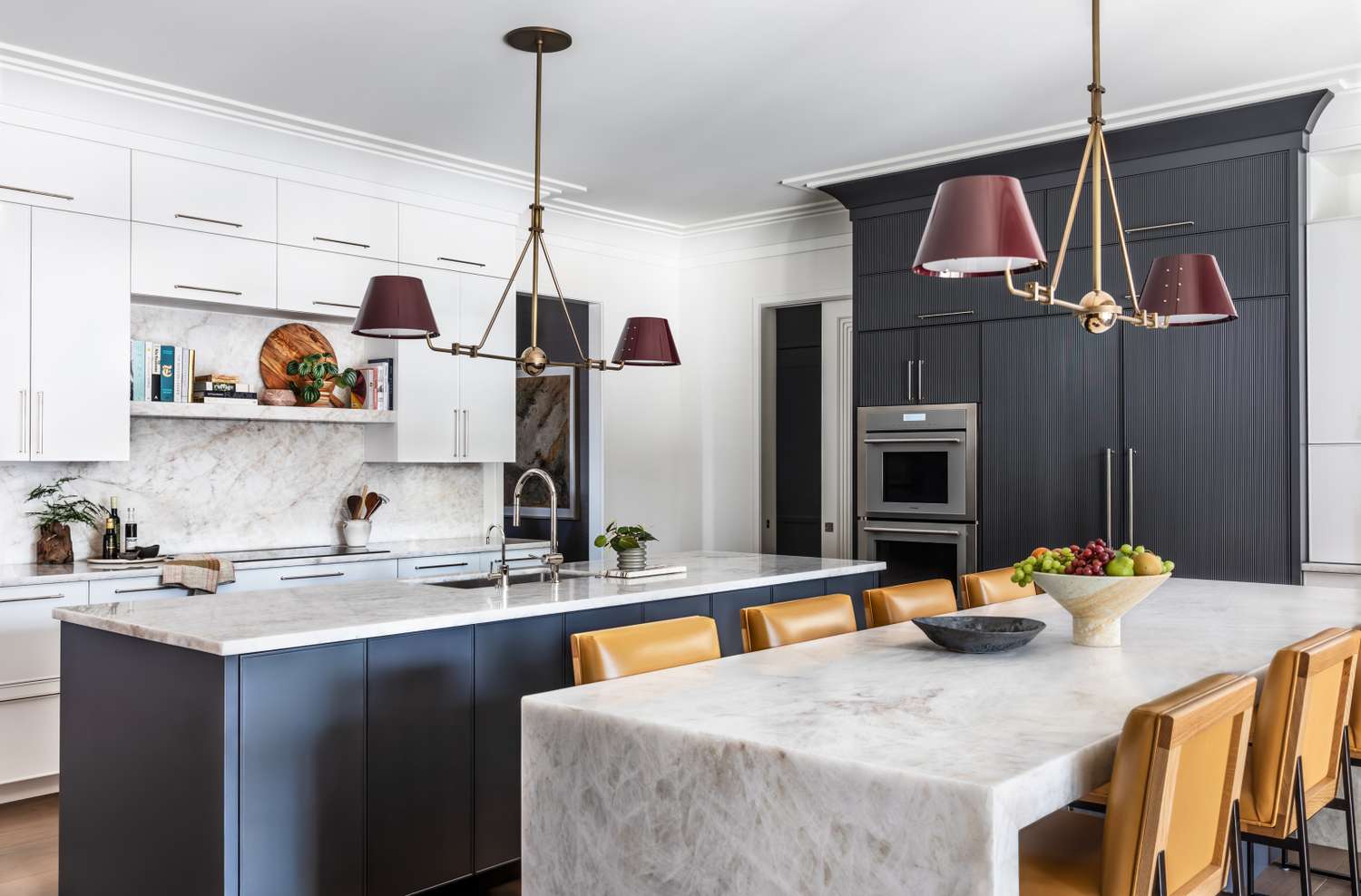Sometimes more really is more. A kitchen island works well in many homes, but if you have the space, why not add another? Two create more space for meal preparation – you can even use one of the islands as a breakfast bar, an area to gather and enjoy hors d'oeuvres with friends, or even a space for a dinner party in the kitchen.
It's certainly a great idea, but planning your kitchen for more than one island can be daunting. Here, we've taken inspiration from interior designers to help guide you—and some helpful advice from these pros.
Alternative heights
Venjhamin Reyes / Megan Gorelick Interiors
The best thing about double kitchen islands is that they allow you to do more with your space. In this home, interior designer Megan Gorelick layered two islands for clients who enjoy entertaining.
“We created a work island and a seating island,” she says. “The clients wanted to incorporate two different heights – bar and counter – to give the seating island a bit more dimension and character.”
She also used different materials in each case: the counter-height model is made of quartzite and the seating island is made of porcelain.
Mix materials
Halkin Mason Photography / Interior Design by Marguerite Rodgers
The two islands allow you to really experiment with materials – so take advantage of the opportunity! For this space, Meg Rodgers of interior design firm Marguerite Rodgers designed one island out of walnut and the other out of durable white stone. The materiality was determined by the function.
“The main island is the hard-working centerpiece of the kitchen with generous counter space,” she says. “The second island was designed as a social gathering place, equally suitable for casual dining, conversation or cocktails.”
Let the lighting shine
Stephen Kent Johnson / Interior Design by Pembrooke & Ives
In this kitchen, interior design firm Pembrooke & Ives incorporated two islands into a modern space. While it's incredibly functional—it even has two sinks—the decorative elements are really the star of the show.
On the ceiling, vintage Austrian chandeliers add just the right amount of drama, and a striking marble backsplash brings the space to life.
Go big
Venjhamin Reyes / Megan Gorelick Interiors
If you frequently host larger gatherings or have a large family, adding a second island can be a great way to maximize space in your kitchen.
“Our client loves making breakfast for his whole family, so we designed the work island to include a griddle so he can make lots of pancakes for everyone who visits,” says Gorelick. “Knowing how big the family is, we wanted to get as much seating as possible to complement the dining table.”
Keep it cohesive
Rebekkah Westover/Caitlin Creer Interiors
In this kitchen, interior designer Caitlin Creer effortlessly combines a palette of natural wood, brass, and white stone. The islands – a larger seating area and one for food preparation – reflect this cohesive aesthetic.
“There’s a great flow for entertaining and plenty of space for serving and preparation,” she says. “We typically make sure to use heavy-duty counters on the back island.”
Make it comfortable
Jacqueline Marque Photography/Interior Design by Bishop Studio
Kitchens often run the risk of appearing drab or sterile – kitchen islands provide a great canvas to warm it up a bit. In this space, Jennie Bishop of Bishop Studio designed a space “that feels as sophisticated as it does functional.”
“We layered materials like honed marble, rich oak and deep charcoal cabinets to create warmth and depth while maintaining a timeless balance,” she adds.
Make a statement with stone
Ali Budd
If you find a material you really like, why not add it to both islands? In this kitchen from Ali Budd Interiors, the beautiful gray stone on each island blends seamlessly with the black and white color palette.
